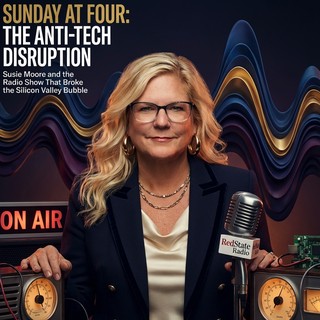
Supreme Court associate justice Clarence Thomas gestures as he speaks during an event at the Library of Congress Thursday, Feb. 15, 2018, in Washington. (AP Photo/Pablo Martinez Monsivais)
The Supreme Court’s decision Tuesday in the case of Kathrine Mae McKee v. William H. Cosby, Jr., was notable more for Justice Clarence Thomas’ concurrence than its actual outcome. In his opinion, Thomas signaled it might well be time for the Court to rethink the seminal case of New York Times Co. v. Sullivan. Decided in 1964, Sullivan held that in order for a public official to successfully recover from a news publication for libel, the official must show not only that the statement in question was false but also that it was made with knowledge that it was false or in reckless disregard of its truth or falsity – i.e., “actual malice.” Since then, Sullivan’s holding has been extended to include “public figures” (not just officials) and to apply in actions for false light invasion of privacy and intentional infliction of emotional distress in addition to libel actions. Yesterday’s ruling arose from a defamation claim filed by McKee in which she asserted that Cosby’s attorney composed and leaked a defamatory letter which damaged her reputation and humiliated her following her 2014 accusation that Cosby had forcibly raped her in 1974. The suit was filed in federal court under state (Massachusetts) law. The trial court dismissed McKee’s suit and, on appeal to the 1st Circuit, the Court of Appeals upheld the dismissal, applying Sullivan and noting that by relaying her accusation to a reporter, McKee had “thrust herself to the forefront of the public controversy over sexual assault allegations implicating Cosby and was, therefore, a ‘limited-purpose public figure,’” and thus, had to meet the actual malice standard in order to proceed. McKee file a petition for writ of certiorari to the Supreme Court which the Court denied (meaning they would not take up the case and the lower courts’ dismissal of her case would stand.) But Thomas perked up First Amendment ears with his concurrence in which he traced the history of US libel law, highlighted the flawed reasoning of Sullivan, and urged the Court to “reconsider our jurisprudence in this area.” Following is a roundtable discussion by RedState contributors regarding this development.
Sarah Lee:
streiff:
As they say, bad facts make bad law. The Sullivan decision must be viewed in the context of the Times (Civil Right era) and the circumstances (lawfare conducted by some Southern politicians before friendly local juries to penalize unfavorable reporting). As many have noted (like NYU law professor Richard Epstein), the Supreme Court could have solved the problem without creating, in my view, an unprincipled precedent. Simply because a person becomes a public figure — and in this case, Ms. McKee was a public figure only by verbal gymnastics — that should not make them a target for slander and libel that cannot be defended against. To a great extent, I think the British courts have this right. The person being libeled or slandered is the aggrieved party. The person alleged to have committed the libel should be required to prove that their statements are true in order to avoid being held to account.
Mike Ford:
One thing I’d like to see revisited is the Incorporation Doctrine. The Framers of the Constitution were pretty sharp guys. The more I read that wonderful piece of prose, the more I truly believe that each and every word in it, was chosen—or left out and for a reason.
Justice Thomas’s interest in re-examining the 1st Amendment has one very solid leg to stand on. That leg has to do with the differences in wording between the First and Second Amendments.
The First Amendment is a specific prohibition on Congress; “Congress shall make no law…” No other governmental entity is mentioned. The Second Amendment is worded in a different and much more far-reaching manner: “ shall not be abridged.” No modifiers, no restrictions, simply shall not—by anybody or anything.
And, yes, SCOTUS has ruled on numerous occasions that the Incorporation Doctrine applies to the First Amendment. But, as we all know, precedent or stare decisis simply means that in similar circumstances, we will decide such cases as we have in the past—until we decide—to decide them differently.
Joe Cunningham:
I fully understand how all the Constitutional and lowercase libertarians could panic at seeing the clip of Thomas’ opinion in Katherine Mae McKee vs. William H. Cosby, Jr. that made headlines. But, a readthrough of the full opinion leads me to believe that Thomas is on the right path here, even if New York Times Co. v. Sullivan has proven to be an overall good thing. The problem is that there are actors in our modern media who are acting in bad faith – and seemingly relying on Sullivan to protect them.














Join the conversation as a VIP Member